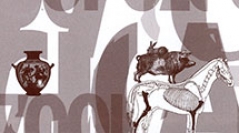

 Anthropozoologica
48 (1) - Pages 15-36
Anthropozoologica
48 (1) - Pages 15-36Thanks to its high nutritional potential and huge ivory canines, walrus (Odobenus rosmarus) appears to have been a key resource in the subsistence economy of Dorset groups. However present archaeological data are sparse and a more global analysis of its exploitation by the Palaeoeskimos is required. The Tayara site (KbFk-7) in Nunavik (Quebec, Canada) yielded a significant assemblage of walrus bones and many manufactured ivory objects. In addition, Tayara serves as a reference site in Eastern Arctic cultural chronology. A thorough zooarchaeological study has been conducted which includes skeletal profile, the sexing and ageing of walrus bones, and a technological study of the manufactured objects, including a use-wear analysis on lithic tools. This allows the discussion of several aspects of the modus operandi for the exploitation of walrus, from the death of the animal to the processing of the raw material into artefacts. Even if the walrus seems to have been treated with the same processes as other species, some specificities have been noted, particularly in the selection of the different skeletal elements for tool productions and the emblematic value that this animal may have played in consumption and production activities.
zooarchaeology, hunting, butchering, use-wear traces, bone technology, Tayara, Quebec, Nunavik.